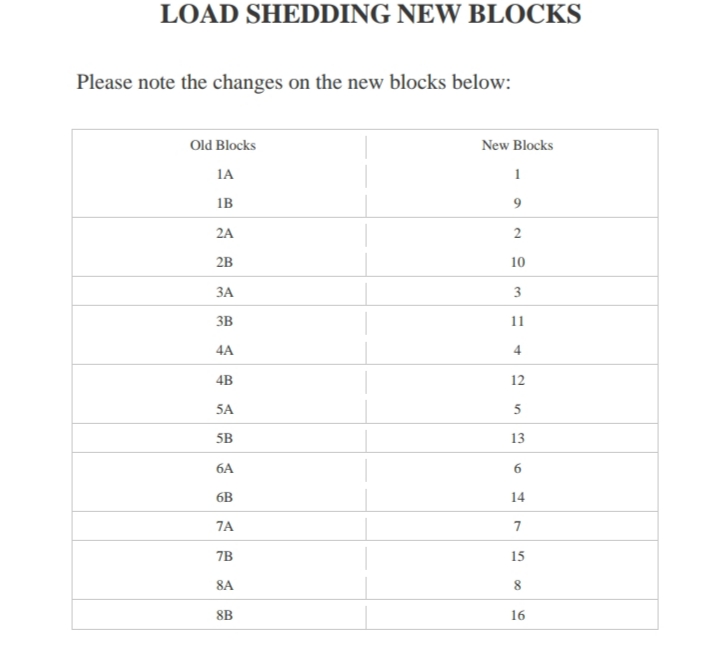Just when you think you’ve got a good understanding of South Africa’s load shedding schedule, the City of Johannesburg changes you region’s schedule as people start to light candles again. The recent move means that the city now loses power in 2-hour blocks. It’s just… not aligned with the previous schedule.
According to City Power, the change meant Johannesburg’s schedule will now align with Eskom’s schedule — the one that’s used nationwide. Before now, City Power opted for the four-hour blocks, because it wasn’t convinced its grid would be able to handle two sessions of two-hour blackouts per day. So four-hour blocks were the best next option.
Dear Customer
Please find attached the new aligned 2 Hour City Power and Eskom Gauteng load shedding schedule.
From 18h00 we will align to Eskom.
We will still have 16 blocks and this has been posted on our website https://t.co/3X45hC02u3.— @CityPowerJhb (@CityPowerJhb) February 5, 2021
Substations across the city have endured significant strain already, with most taking hours to restore power after load shedding has ended. Ageing infrastructure cannot handle frequent switching in many cases, and substations could run into substantial damage if pressured to restore too many times.
Meet the new load shedding blocks
Since 5 February 2021, Johannesburg’s residents were met with a completely new schedule, one that wasn’t yet updated on popular load shedding monitoring apps.
City Power tweeted the updated schedule, detailing which blocks would port to Eskom’s blocks. These are the codes allocated to your area’s load shedding schedule. For example, Linden, Johannesburg falls under block 2A on City Power’s grid, and ports to block 2 on Eskom’s schedule.
 Using the above table, find your suburb’s old block code and confirm the new correlating block on Eskom’s schedule. Following the announcement last week, both EskomsePush and Load Shedding Notifier have updated their apps to reflect the new schedules. So your least-cumbersome solution is to download one of those and check the new schedule. You know, so you’re not caught off-guard by sudden darkness with a dead phone.
Using the above table, find your suburb’s old block code and confirm the new correlating block on Eskom’s schedule. Following the announcement last week, both EskomsePush and Load Shedding Notifier have updated their apps to reflect the new schedules. So your least-cumbersome solution is to download one of those and check the new schedule. You know, so you’re not caught off-guard by sudden darkness with a dead phone.




